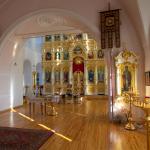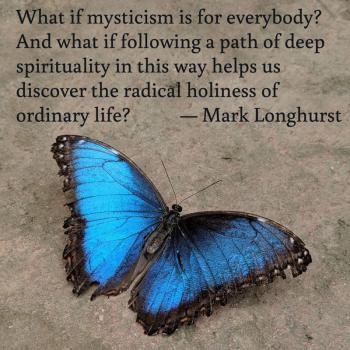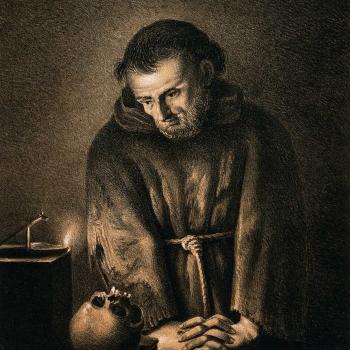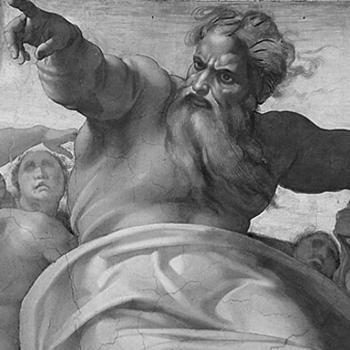Today’s guest post is by Lisa Deam, the author of 3000 Miles to Jesus: Pilgrimage as a Way of Life for Spiritual Seekers and A World Transformed: Exploring the Spirituality of Medieval Maps. Lisa is the host of The Contemplative Writer website (www.thecontemplativewriter.com).

I’d like to begin with a confession: I natter on about pilgrimage whenever I can, recently wrote a book about pilgrimage, and was invited by my friend Carl McColman to write for his blog on the subject of pilgrimage . . . yet I have never taken a pilgrimage. This might seem surprising. You may be wondering how someone could have so much to say about a discipline they haven’t experienced.
Although I’ve never walked a long and dusty road, history’s monks and mystics have taught me that pilgrimage is primarily a spiritual journey—in fact, a spiritual state, one that characterizes the contemplative life. An open and seeking heart turns a person, even a sedentary one, into a pilgrim. Spiritual seekers are always on the move.
The spiritual dimension of Christian pilgrimage is present throughout Scripture. In his book A Long Obedience in the Same Direction, theologian and author Eugene Peterson said that “pilgrim” is one of our primary biblical designations, telling us that “we are people who spend our lives going someplace, going to God.” We read about the journey in Hebrews 11, in the beautiful description of the great cloud of witnesses of the faith, such as Noah, Abraham, Sarah, and many others. Although some in this cloud traveled physically, their larger journey was spiritual. They were “foreigners and strangers” on the earth who longed for “a better country—a heavenly one” (Hebrews 11: 10, 13–16). We follow in the footsteps of this great cloud of witnesses as we make our own way to the heavenly city at the end of life’s road.
Reading in and around the Christian tradition, we don’t get far without tripping over references to our pilgrim identity. One of my favorites comes from Bernard of Clairvaux, twelfth-century Cistercian abbot, mystic, and theologian. In one of his sermons, he writes: “Thanks be to God, through whom our consolation overflows in this pilgrimage, in this exile, in this distress.” Although Bernard of Clairvaux wrote this sermon for the Feast of Epiphany, I find myself repeating his thoughts on God’s mercy all year round, especially when the road of life is strewn with grief or difficulty. Thanks be to God, through whom our consolation overflows in this our pilgrimage!
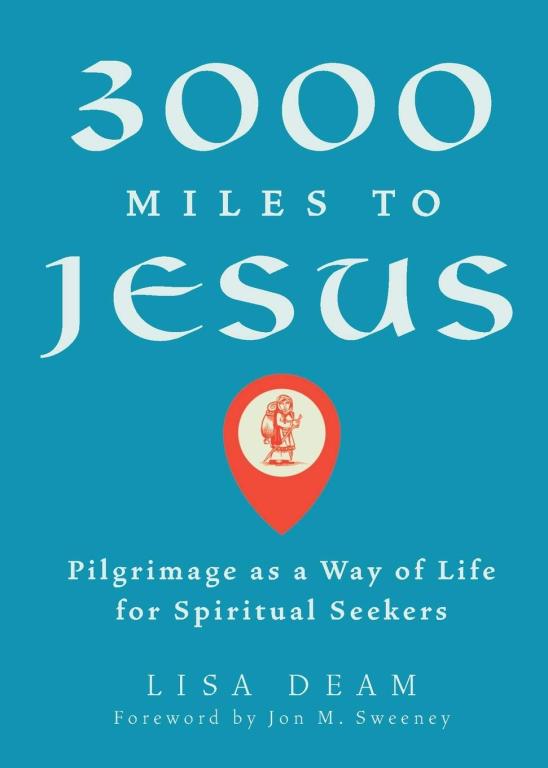
A number of history’s monks and mystics promote pilgrimage as a spiritual exercise, one we can do without ever leaving our sofa (or cell, as the case may be). In the fourteenth century, the mystic Walter Hilton wrote a spiritual treatise, the Scale of Perfection, that includes a lengthy section on pilgrimage. Those who wish to draw near to Jesus, Hilton says, should conceive of their life as a pilgrimage. They should be prepared for the same kinds of challenges a physical pilgrim might face: a long and difficult road, thieves seeking to steal and destroy, and inner doubts and temptations. Despite these challenges, spiritual pilgrims keep going because they know what awaits them at the end of this road: the heavenly city of Jerusalem. A place of peace. The enfolding arms of Jesus.
In his treatise, Hilton refers to spiritual pilgrimage as a “practice.” His choice of term is intriguing. Was spiritual pilgrimage a meditative discipline along the lines of contemplative prayer or lectio divina? The details remain unclear. But another travel afficionado provides some insight. In the fifteenth century, the Dominican friar Felix Fabri wrote a devotional manual, the Zion Pilgrim, that invites readers to take an imaginative or vicarious pilgrimage to Jerusalem. Each devotion includes the travel itinerary for the day, including the scenery or monuments to be seen, along with songs and prayers. At the end of this journey, the reader will have “arrived” in the sacred city of Jerusalem.
And so we see that pilgrimage of the heart—or perhaps we could call it virtual pilgrimage—was, at certain points in history, a spiritual exercise that helped seekers draw closer to Jesus. This practice has largely been lost to our time. But from the rich writings of mystics like Hilton and Fabri, we can perhaps learn to see each of our days, our prayers, and our yearnings as steps in the larger journey that takes us to a place of peace. On some days, our itinerary leads us down a road bathed in gentle sun, with magnificent vistas opening to either side. On other days, we find ourselves facing a steep mountain path we somehow have to climb. Through it all, we keep our eye trained on our destination and our hope fixed on the one to whom we travel.
Undertaking a physical pilgrimage would undoubtedly enhance our understanding of Hilton’s and Fabri’s writings. I hope that one day I can walk the Camino de Santiago or a similar route and draw lessons from the bodily experience of walking. For now, it helps me to remember that history’s mystics viewed pilgrimage as a spiritual state. The past year of the pandemic taught us that we cannot heft our backpack and hit the road any time we like. But in our heart, we’re always on our way to God.
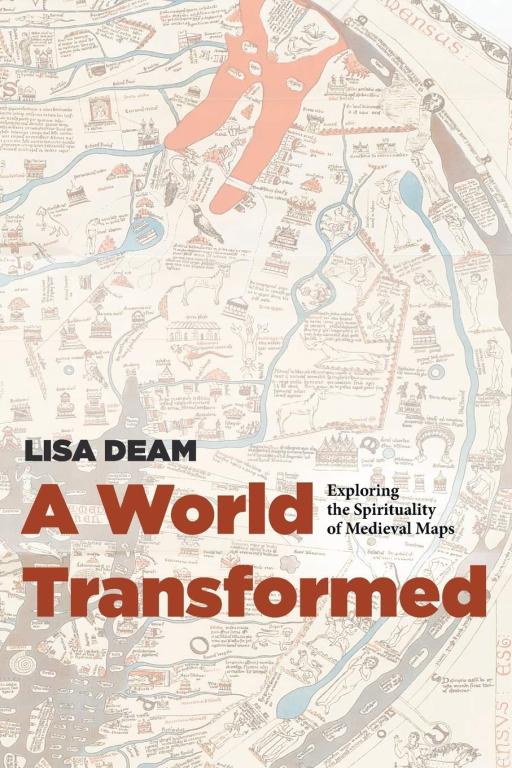
Enjoy reading this blog?
Click here to become a patron.



